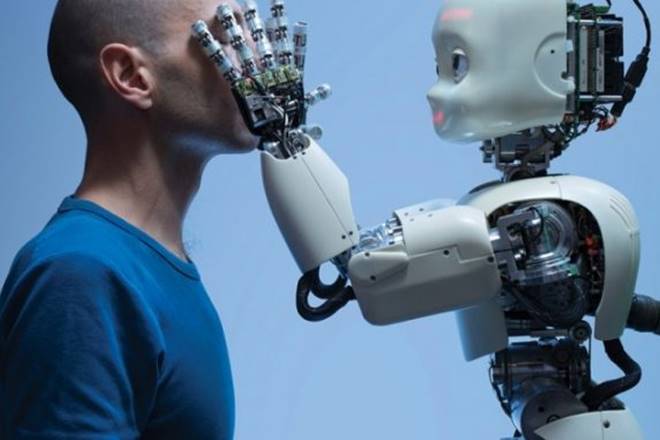The current technology or information revolution has altered human life. Like the field of agriculture, the influence of industrial revolutions has developed a more advanced civilisation.
Technology has progressed the human race; for instance, you can video conference from your backyard, work remotely with a virtual assistant from anywhere on the planet, and have anything you desire delivered to your doorstep.
The advancement of technology, as a result, is creating more of a convenient life for the human race, where everything starts and ends with a button.
Even budding engineers are no more dependent on class notes for IT assignment help, as smart apps can easily provide study references that match their syllabus.
Suppose you are fond of robotic mechanisms. In that case, you will be amazed to know that – between 2021 and 2028, cylindrical robots are expected to be the fastest-growing section of the worldwide industrial robotics market. The market for cylindrical robots will expand at a compound annual growth rate of about 12% throughout this time period.
It’s time you start investing in one of them as well!
Meanwhile, AI spent over $463 million in 2019. It’s predicted to rise to over $2 billion by 20252 in the healthcare and pharmaceutical industries.
The invasion of technology has undoubtedly turned the table and put a benchmark in every industrial field. Here is why you must know about the following the next-gen tech innovations so that you can try them for your next initiative –
- Digital assistants –Digital assistants are several types of software capable of conducting rule-based work processes and communicating with people via text and speech. Robotics Process Automation (RPA), chatbots, and voice assistants are examples of digital assistant technology.
These digital assistants will assist future organisations in meeting productivity and accessibility demands and enabling the shift from “performing jobs” to activities that generate value for analogue employees.
If you are a business owner who wishes to improve accessibility, quality, and response in time to their consumers or employees, you might consider digital assistants.
- Internet of Things (IoT)– The Internet of Things (IoT) is a collection of identifiable objects, such as electronics and sensors, that can connect and share data via the Internet and cloud solutions.
Third parties occasionally join this network and can provide users with information and services.
A significant example of IoT objects is a sensor that monitors a pump in a manufacturing facility to the smartphone you use to unlock your car or residence.
The possibilities for IoT applications are nearly endless. The Internet of Things (IoT) lies at the heart of concepts like smart homes and Industry 4.0.
You may also use IoT sensors to create self-regulatory systems for monitoring and controlling various business and manufacturing operations.
Various analytics systems that employ IoT data to deliver valuable insights and new user interfaces for equipment or products, “wearables” and the settings in which they exist are increasing.
- Artificial intelligence (AI) – Artificial intelligence (AI) is a broad word that refers to the ability of a computer programme or computer to appear intelligent. AI can usually capture facts about its surroundings and learn or adapt to attain a specific goal.
To enjoy the benefits of AI, you’ll need a clear strategy and plan for capturing and utilising data, which will serve as a foundation for better decisions, increased insight, and process optimisation.
Data is referred to as the “new fuel,” and it, like fuel, must be refined to maximise its worth. Financial data, customer data, sales data, product and service data, sensor data, and other types of data are all held by Norwegian businesses.
This data has many latent values that AI algorithms can exploit to develop insights and automation opportunities.
- Virtual & augmented reality-VR (virtual reality) is a technology that allows users to engage with a computer-simulated replica of a real-world environment. Augmented reality (AR) is a virtual reality in which reality and a computer-simulated environment are combined, as seen in Pokémon Go and Snapchat lenses.
AR is also used in industrial settings to provide blueprints or status information for equipment you are shooting or seeing through glasses or a tablet/iPad.
Virtual reality and augmented reality technologies also improve customer journeys and improve the quality and speed of manual job procedures.
Even computer game businesses are releasing new gaming platforms, educational institutions are changing their approaches to traditional teaching, and manufacturing companies are now adopting VR and AR technologies to perform maintenance on complicated production equipment.
- Blockchain– A blockchain is a distributed transaction database in which all parties have access to the same information regarding transactions. A majority of participants must agree that the change meets with the rules set for a transaction to be approved before it can be changed in the database.
A blockchain enables secure transactions between numerous parties without the requirement for the transaction to be confirmed by a third party. As a result, it establishes trust between the parties who will interact in a network.
Today, blockchain is most commonly linked with cryptocurrencies, which allows for the transfer of monetary values between parties. In fact, its applications and prospects in areas such as consumer goods, real estate, logistics, health, energy, and insurance are thought to be significant.
Despite its great potential, the technology currently has only a few well-documented users.
- Drones – Drones are unmanned aerial vehicles that can fly (or dive) autonomously using software or be controlled remotely by humans.
Drones are used for various tasks, including searching, surveillance, and transportation. Several Norwegian firms are at the forefront of drone technology development and commercialization.
Even governments in some places have developed their own drone policy to create favorable conditions for the use of drones and the expansion of the drone industry.
Businesses are investing in drone technology to see how it might help them enhance operational efficiency and access new and improved data.
Several worldwide retail and logistics firms are already looking into how drones may help with more efficient and cost-effective distribution.
Drones are also being used by various companies in the oil and gas, energy, and industrial production sectors to monitor and gather essential data from infrastructure like refineries and power lines networks.
The technologies highlighted are more contemporary developments that are already considered intriguing. Even some believe that these will have the power to transform society, business, and daily life.
So why don’t you try them as well!
Author Bio: John Martin hails from the UK and is a professional content writer and is also associated with top brands where he provides math assignment help online. Martin likes to read and watch sci-fi movies in his free time.



